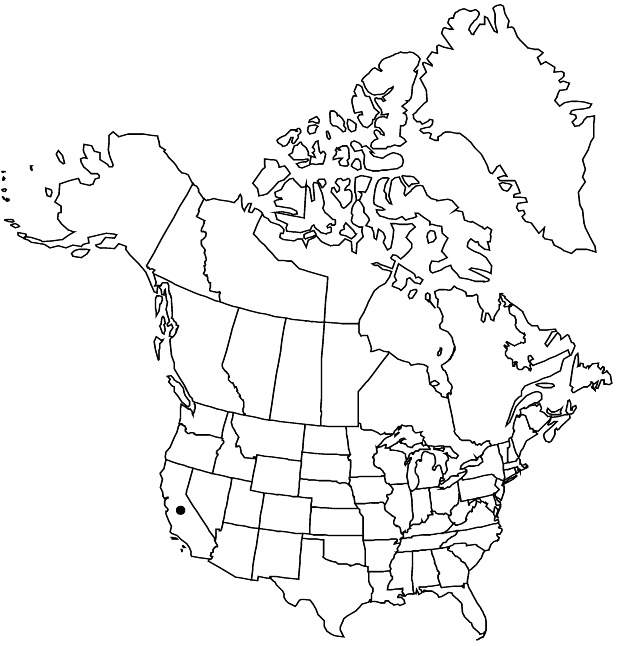Difference between revisions of "Lithophragma bolanderi"
Proc. Amer. Acad. Arts 6: 535. 1865 ,.
FNA>Volume Importer |
FNA>Volume Importer |
||
| Line 11: | Line 11: | ||
|name=Lithophragma heterophyllum var. bolanderi | |name=Lithophragma heterophyllum var. bolanderi | ||
|authority=(A. Gray) Jepson | |authority=(A. Gray) Jepson | ||
| − | }}{{Treatment/ID/Synonym | + | }} {{Treatment/ID/Synonym |
|name=Lithophragma heterophyllum var. scabrellum | |name=Lithophragma heterophyllum var. scabrellum | ||
|authority=(Greene) Jepson | |authority=(Greene) Jepson | ||
| − | }}{{Treatment/ID/Synonym | + | }} {{Treatment/ID/Synonym |
|name=Lithophragma scabrellum | |name=Lithophragma scabrellum | ||
|authority=Hooker & Arnott | |authority=Hooker & Arnott | ||
| − | }}{{Treatment/ID/Synonym | + | }} {{Treatment/ID/Synonym |
|name=Lithophragma scabrellum var. peirsonii | |name=Lithophragma scabrellum var. peirsonii | ||
|authority=Jepson | |authority=Jepson | ||
| − | }}{{Treatment/ID/Synonym | + | }} {{Treatment/ID/Synonym |
|name=Tellima heterophylla var. bolanderi | |name=Tellima heterophylla var. bolanderi | ||
|authority=(A. Gray) Jepson | |authority=(A. Gray) Jepson | ||
| − | }}{{Treatment/ID/Synonym | + | }} {{Treatment/ID/Synonym |
|name=Tellima scabrella | |name=Tellima scabrella | ||
|authority=unknown | |authority=unknown | ||
| Line 41: | Line 41: | ||
|elevation=0-1500 m | |elevation=0-1500 m | ||
|distribution=Calif. | |distribution=Calif. | ||
| − | |discussion=<p>Lithophragma bolanderi is known from California along the western slope of the Sierra Nevada from Shasta County to the San Gabriel Mountains and the north-central inner coastal mountains around San Francisco Bay north to Mendocino County.</p><!-- | + | |discussion=<p><i>Lithophragma bolanderi</i> is known from California along the western slope of the Sierra <i>Nevada</i> from Shasta County to the San Gabriel Mountains and the north-central inner coastal mountains around San Francisco Bay north to Mendocino County.</p><!-- |
| − | --><p>Variable vegetative features, such as petal shape, size of seeds, and general growth habit, are the result of environmental factors and gene interchange among species. Lithophragma bolanderi is best distinguished from L. heterophyllum by the shape of the hypanthium base, position of styles and stigmas in fruit, length of seed tubercles, and general outline of the petals.</p> | + | --><p>Variable vegetative features, such as petal shape, size of seeds, and general growth habit, are the result of environmental factors and gene interchange among species. <i>Lithophragma bolanderi</i> is best distinguished from <i>L. heterophyllum</i> by the shape of the hypanthium base, position of styles and stigmas in fruit, length of seed tubercles, and general outline of the petals.</p> |
|tables= | |tables= | ||
|references= | |references= | ||
| Line 66: | Line 66: | ||
|publication year= | |publication year= | ||
|special status= | |special status= | ||
| − | |source xml=https://jpend@bitbucket.org/aafc-mbb/fna-data-curation.git/src/ | + | |source xml=https://jpend@bitbucket.org/aafc-mbb/fna-data-curation.git/src/8f726806613d60c220dc4493de13607dd3150896/coarse_grained_fna_xml/V8/V8_159.xml |
|genus=Lithophragma | |genus=Lithophragma | ||
|species=Lithophragma bolanderi | |species=Lithophragma bolanderi | ||
Revision as of 19:04, 18 September 2019
Plants usually robust. Flowering stems branched, (rarely bearing bulbils in place of flowers), 25–85 cm. Leaves in basal rosette and cauline, basal unlobed or 3–5-lobed, never deeply lobed, cauline (2–3+), alternate, often 3–4-lobed, much reduced, similar to basal, (rarely with axillary bulbils); stipules small, not decurrent on petiole, (margins fimbriate); petiole usually to 25 cm; blade green, orbiculate, surfaces hairy. Inflorescences 1–3, erect, 3–5(–25)-flowered racemes, 2(–3)-branched, (10–85 cm). Pedicels equaling or shorter than hypanthium, (flowers long-pedicellate). Flowers persistent, fragrant, horizontal; hypanthium narrowly campanulate with obtuse base, usually not elongating in fruit, throat open, (length 2 times diam.); sepals erect in bud, widely spreading after anthesis, triangular; petals (completely exserted), widely spreading, white, ovate-elliptic, narrowly clawed, usually unlobed with serrations at base, sometimes 3–5-lobed, 4–7 mm, ultimate margins entire; ovary to 1/2 inferior; styles slightly exerted in fruit; stigma papillae apical. Seeds 0.3–5 mm, tuberculate (tubercles in 3–19 rows, spinelike). 2n = 14, 28, 35, 42.
Phenology: Flowering May–Jun.
Habitat: Well-drained, open, grassy areas of oak or coniferous-oak woodland
Elevation: 0-1500 m
Discussion
Lithophragma bolanderi is known from California along the western slope of the Sierra Nevada from Shasta County to the San Gabriel Mountains and the north-central inner coastal mountains around San Francisco Bay north to Mendocino County.
Variable vegetative features, such as petal shape, size of seeds, and general growth habit, are the result of environmental factors and gene interchange among species. Lithophragma bolanderi is best distinguished from L. heterophyllum by the shape of the hypanthium base, position of styles and stigmas in fruit, length of seed tubercles, and general outline of the petals.
Selected References
None.
